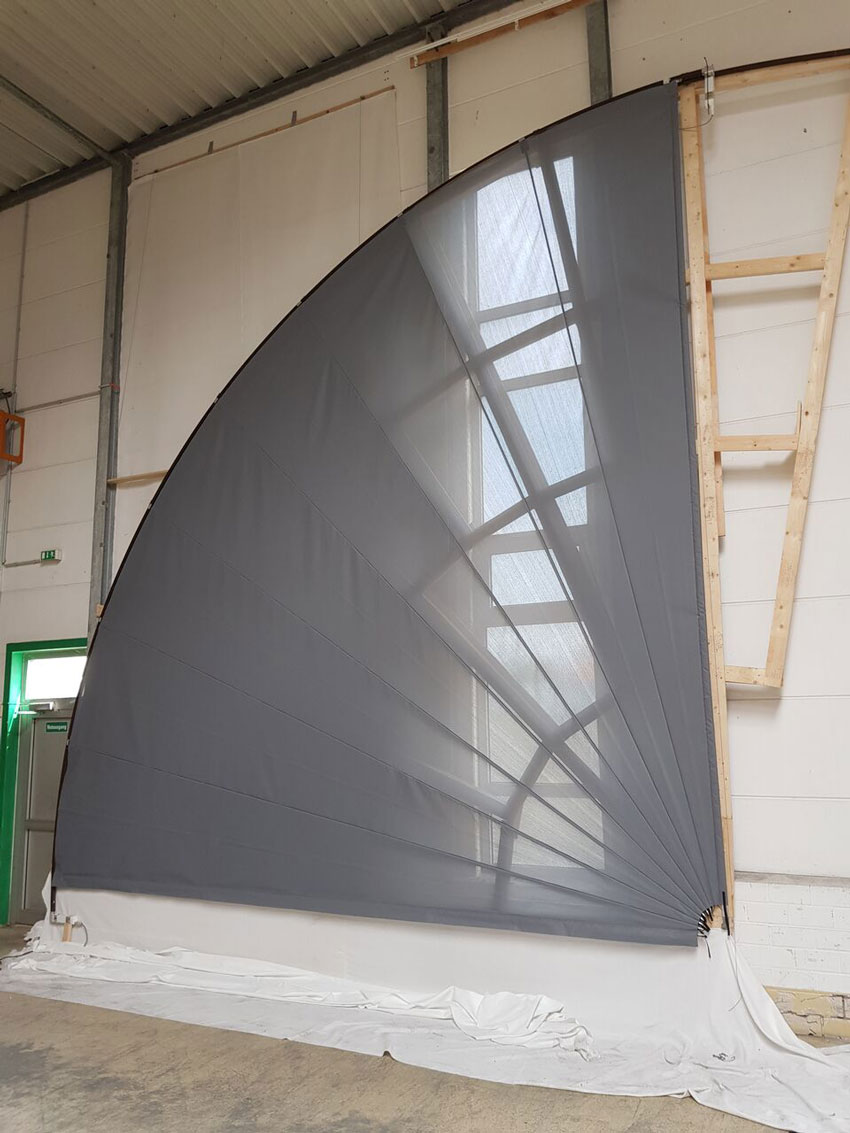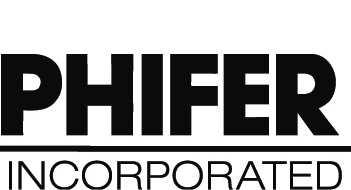Understanding the Benefits of Interior and Exterior Shading Systems

Photo courtesy of Draper, Inc.
A louver system is being installed in the Canadian Parliament building to allow ambient light into the chamber while preventing direct sun penetration.
Another example is the Plaza Tower project in Greenwood Village, Colorado.
The 22-story Plaza Tower One was built in 1987. The structure contains large arched windows at the top level on both sides of the building. The original shading systems were effective and met the architectural requirements. Over time, however, some problems arose and a lack of spare/replacement parts meant that the systems could no longer be operated. To solve this problem, the shading was replaced with a series of bottom-up shades with cables. Compared with the original shading installation, the new system was not very elegant and was unliked by the building tenant, who called for its replacement back to something along the lines of the original system. Unfortunately, the old system was no longer available.
In August 2017, Premier Commercial Interiors began working with a shading company to develop a solution. Several potential solutions based on regular and tension shades were too similar to the solution the tenant had rejected. One proposal included a series of triangular shades that drew to the bottom center of the arched glazing. This was an interesting solution but resulted in drive cables being permanently in front of the glazing, which was not acceptable to the tenant.
Eventually, a skylight shading system that incorporated a motorized track and a series of triangular fabric panels was proposed. While the system broadly met the Plaza Tower project requirements, there were a number of significant issues to address. In particular, the proposed system was designed to deal with horizontal rather than vertical glazing, and it had a maximum radius of approximately 10 feet. For the Plaza Tower project, the required radius was almost double this at approximately 18 feet 6 inches.
In October 2017, following discussions about the project and the requirements that had to be met, a full-size mockup of the system was produced using available components to demonstrate the feasibility of the proposed solution. The system was proposed to the building owner, who accepted the solution and placed an order in March 2018. Engineering work was commenced immediately, and a number of changes were made to the original system, including the introduction of a second motor for each track to cope with the required size of the systems and the development of a mechanism to provide tension in the large fabric panels. The design of the custom system was finalized in June 2018, and installation began in September 2018.

Photo courtesy of Draper, Inc.
The customized shading solution for Plaza Tower was so complex and unique that it required consultations from multiple professionals and experts. The final design was purchased and implemented in 2018.
These examples of custom-designed solutions illustrate the complexities involved when providing specifications and design plans for shading systems. To provide solutions for the Canadian Parliament and the Plaza Tower, multiple experts were consulted and worked together to provide a plan that would satisfy occupants and also meet their working needs.
Energy Efficiency
According to the National Institute of Building Sciences, proper daylighting requires not only providing enough daylight to an occupied space but also balancing glare, heat gain and loss, and variations in light throughout the day. With all the shading options available, there are many ways to reduce glare and limit heat gain and loss, thus positively affecting occupant health and safety by providing sunlight while also the harmful effects of too much sun exposure. In addition to providing health, safety, and welfare for occupants, shading and daylighting solutions also improve a building’s energy efficiency by limiting heat gain and loss, thus reducing the use of HVAC systems.
Though a shading system may come with a substantial initial cost, this must be balanced against the reduced capital costs associated with a possibly downsized HVAC system and the reduced operational costs made possible by lowered energy demand. The benefits to building occupants, including improved health and productivity, and the aesthetic advantages, including reduced glare, enhanced views to the outside, and reduced UV damage to interior finishes and furnishings, also should be considered. It should be noted that a shading system can also contribute to a project’s sustainability goals, which may include a healthy indoor environment, energy efficiency, and longevity of building components.
By reducing the reliance on artificial lighting, natural daylighting can potentially reduce building energy use by up to one third. This is significant. Electric lighting accounts for 35 to 50 percent of the total electrical energy consumption in commercial buildings. Strategic placement of windows and skylights in the building envelope ensures most areas receive ample, diffuse light. To maximize energy savings, daylighting must be integrated with an effective shading system coupled with lighting controls, such as dimmers and occupancy sensors, so that artificial lighting is used only when needed.
Conclusion
When considering shading solutions for a building, it is important to understand that there are many options available, but no single product can provide a comprehensive solution. Ideally, a shading expert will provide consultation during the design process. Through the use of modified products, specialized solutions, and custom solutions, it is possible to provide health and safety to occupants through proper sun exposure while also limiting eye strain caused by glare. These comprehensive solutions allow for a positive environmental impact through energy efficiency and reduce energy costs.
Resources
Ander, Gregg D. “Daylighting.” Whole Building Design Guide. National Institute of Building Sciences. 15 Sept. 2016. Web. 26 Sept. 2018.
Offering Solar Control Solutions for Every Application. Draper. Web. 26 Sept. 2018.
Solar Shading Benefits. European Solar Shading Organization. Web. 26 Sept. 2018.
Windows and Offices: A Study of Office Worker Performance and the Indoor Environment. California Energy Commission. October 2003. Web. 26 Sept. 2018.
Jessica Jarrard is an independent writer and editor focusing on health, science, and technology. She contributes to continuing education courses and publications through Confluence Communications. www.confluencec.com










